NAB Show: Directing Real People on Camera
By Holland Cooke
Consultant
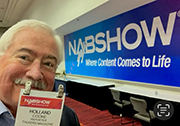 If you’re looking to jump-start – or optimize – your video interview technique, this session alone was worth the trip to Las Vegas. Washington-based video content strategist/producer/interviewer Amy DeLouise and cinematographer/gaffer Anne Saul delivered a soup-to-nuts “Boot Camp” session to an overflow crowd.
If you’re looking to jump-start – or optimize – your video interview technique, this session alone was worth the trip to Las Vegas. Washington-based video content strategist/producer/interviewer Amy DeLouise and cinematographer/gaffer Anne Saul delivered a soup-to-nuts “Boot Camp” session to an overflow crowd.
For the decks, hit AmyDeLouise.com, click Slide Decks then Real People Boot Camp, parts 1 and 2. You can devour an impressive tutorial of production techniques, including specifics about equipment and how-to-use-it.
Even if you’re just doing radio or podcast interviews, Amy offered some useful tips:
“Nervous Speaker Technique”: Before the interview, chat ‘em up, perhaps asking for a personal anecdote, i.e., “Why did you decide to become a _____?” If you are shooting video, do the B-roll and walk-and-talk shots first. Then, when they’ve gotten used to you and the set-up, start the interview. “Worst case: Let them take a break, ‘Go do some emails,’ then resume in 20 minutes.”
“The Contradict Me Technique”: Because “some speakers are very reserved, they won’t show emotion unless they feel they need to correct your misunderstanding.” So, bait them: “Isn’t A.I. just a gimmick?”
“The Shorter Answer Technique”: Some speakers have a LOT to say,’ so Amy says let them get it out of their system, THEN ask “How would I explain this to my children?”
“Two Do-Over Techniques”: If you want to re-ask a question, fib: “The part about X was really great. But we had a little bit of noise, do you mind if I ask you that one more time?” Or “lean in as if you didn’t quite hear the answer, and they will repeat it;” a ploy which “only works for the last part of what they said.”
“The Finish My Sentence Technique”: Amy says “When all else fails, ask ‘Finish this sentence: The biggest value we bring at ABC Company is…’”
Holland Cooke (HollandCooke.com) is a consultant working at the intersection of broadcasting and the Internet. He is the author of “Close Like Crazy: Local Direct Leads, Pitches & Specs That Earned the Benjamins,” and “The Local Radio Advantage: Your 4-Week Tune-In Tune-Up,” and “Confidential: Negotiation Checklist for Weekend Talk Radio.” Follow HC on Twitter @HollandCooke and connect on LinkedIn.



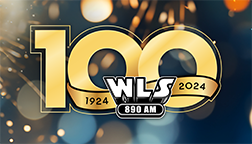 president and market manager Marv Nyren says, “WLS is bigger than a destination on your radio dial – it’s a Chicago institution and treasure. 100 years ago, radio was simply sound communication via radio waves but there’s nothing simple about the impact of WLS on Chicago. WLS has been a neighbor, a friend, and a mentor for people in Chicagoland. It’s been a place where people can go for entertainment and information – and it’s been a companion to the biggest moments in history. We are excited to usher in WLS-AM’s next 100 years with Chicago’s best audio content on-air, online, on-demand, and onsite.”
president and market manager Marv Nyren says, “WLS is bigger than a destination on your radio dial – it’s a Chicago institution and treasure. 100 years ago, radio was simply sound communication via radio waves but there’s nothing simple about the impact of WLS on Chicago. WLS has been a neighbor, a friend, and a mentor for people in Chicagoland. It’s been a place where people can go for entertainment and information – and it’s been a companion to the biggest moments in history. We are excited to usher in WLS-AM’s next 100 years with Chicago’s best audio content on-air, online, on-demand, and onsite.”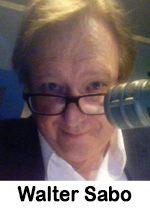 It seems every hour Nielsen and Pierre Bouvard of Cumulus fame (formerly of Westwood One) put out a release stating that radio is just fine, thank you. Radio is more persuasive than TV, direct mail, streaming and print. Radio is a proven success for over 100 years. Most of the buildings housing Procter & Gamble were built on radio – not TV – advertising success. Happily, P&G realized radio’s clout and is now a dominant radio advertiser – again!
It seems every hour Nielsen and Pierre Bouvard of Cumulus fame (formerly of Westwood One) put out a release stating that radio is just fine, thank you. Radio is more persuasive than TV, direct mail, streaming and print. Radio is a proven success for over 100 years. Most of the buildings housing Procter & Gamble were built on radio – not TV – advertising success. Happily, P&G realized radio’s clout and is now a dominant radio advertiser – again!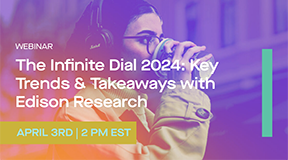 consumer behavior and technology adoption across smart platforms. Marketers and media buyers turn to these insights for important media trends in key channels such as radio, streaming audio, podcasts, social media, and more. Audacy will host a webinar on April 3 with head of research & insights Idil Cakim and Edison Research president Larry Rosin, who will share key trends from The Infinite Dial 2024, including: Media consumption and device adoption, in-car listening habits, podcast trends among key demographic groups, and observations and advertiser insights.
consumer behavior and technology adoption across smart platforms. Marketers and media buyers turn to these insights for important media trends in key channels such as radio, streaming audio, podcasts, social media, and more. Audacy will host a webinar on April 3 with head of research & insights Idil Cakim and Edison Research president Larry Rosin, who will share key trends from The Infinite Dial 2024, including: Media consumption and device adoption, in-car listening habits, podcast trends among key demographic groups, and observations and advertiser insights. 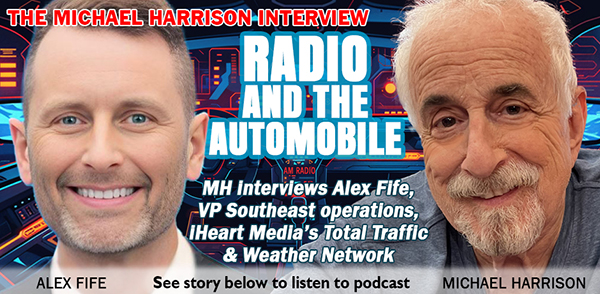
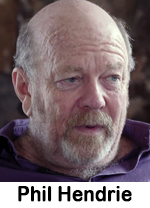 other platforms. Titled, Hendrie, and produced by Freestyle Digital Media and directed by Patrick Reynolds, the film features people like Hendrie’s one-time program director David Hall as well as comedians and Hollywood figures talking about the unique radio program Hendrie launched in 1990 in which he held kooky conversations with offbeat characters – all played by Hendrie himself – in real time. Hendrie tells KCAL-TV, “It was completely original… and it satirized something that I thought needed satirizing – talk radio.”
other platforms. Titled, Hendrie, and produced by Freestyle Digital Media and directed by Patrick Reynolds, the film features people like Hendrie’s one-time program director David Hall as well as comedians and Hollywood figures talking about the unique radio program Hendrie launched in 1990 in which he held kooky conversations with offbeat characters – all played by Hendrie himself – in real time. Hendrie tells KCAL-TV, “It was completely original… and it satirized something that I thought needed satirizing – talk radio.” 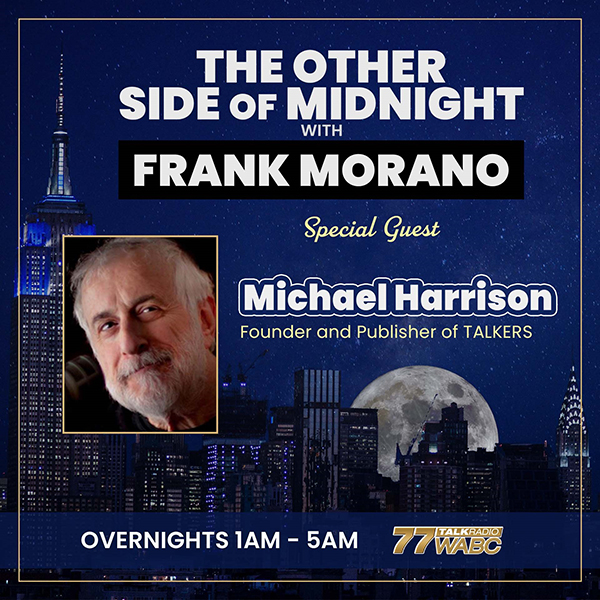
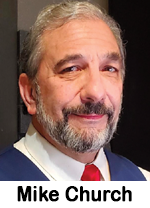 devotion to Internet radio broadcasting, we are launching ‘The Mike Church Show’ into terrestrial radio syndication! The launch date of ‘The Mike Church Show’ will be March 1 and the show will begin its repatriation of AM/FM radio in Atlanta, Georgia’s #7 U.S. radio market on WXKG “The King”! Church adds, “We’ve always known that terrestrial radio was going to play a part in our industry leading development of Internet radio, we just didn’t know in what way. Over the last two years, that role began to materialize with the dearth of quality talk shows and the opportunities to fill that gap left by the wrecking ball that was consolidation’s march through local radio properties.” The program airs live from 7:00 am to 10:00 am ET.
devotion to Internet radio broadcasting, we are launching ‘The Mike Church Show’ into terrestrial radio syndication! The launch date of ‘The Mike Church Show’ will be March 1 and the show will begin its repatriation of AM/FM radio in Atlanta, Georgia’s #7 U.S. radio market on WXKG “The King”! Church adds, “We’ve always known that terrestrial radio was going to play a part in our industry leading development of Internet radio, we just didn’t know in what way. Over the last two years, that role began to materialize with the dearth of quality talk shows and the opportunities to fill that gap left by the wrecking ball that was consolidation’s march through local radio properties.” The program airs live from 7:00 am to 10:00 am ET. 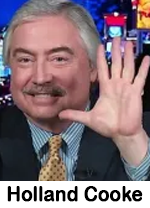 If you’re a news/talk station, don’t assume that you own “news radio” in your market. Imaging is important, but it merely talks-the-talk. You walk-the-walk with local news copy that delivers what solid commercial copy does: benefits. Just doing local news makes you special. But do listeners simply hear a station voice… reading something? Are you merely… accurate? Or do you deliver “take-home pay,” unwrapping the story to tell the listener something useful?
If you’re a news/talk station, don’t assume that you own “news radio” in your market. Imaging is important, but it merely talks-the-talk. You walk-the-walk with local news copy that delivers what solid commercial copy does: benefits. Just doing local news makes you special. But do listeners simply hear a station voice… reading something? Are you merely… accurate? Or do you deliver “take-home pay,” unwrapping the story to tell the listener something useful?
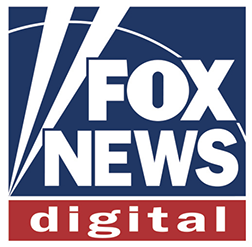 the month reaching 3.27 billion total multiplatform minutes, compared to CNN.com’s 1.85 billion, and NYTimes.com’s 1.59 billion. FOX News Media attracted 1.66 billion total multiplatform views, compared to NYTimes.com’s 1.49 billion, and CNN.com’s 1.17 billion. When it comes to total digital unique visitors – similar to radio’s cume – CNN.com still holds the lead with 112.7 million. But FOX News Digital (109.7 million) has gradually been gaining ground on CNN.
the month reaching 3.27 billion total multiplatform minutes, compared to CNN.com’s 1.85 billion, and NYTimes.com’s 1.59 billion. FOX News Media attracted 1.66 billion total multiplatform views, compared to NYTimes.com’s 1.49 billion, and CNN.com’s 1.17 billion. When it comes to total digital unique visitors – similar to radio’s cume – CNN.com still holds the lead with 112.7 million. But FOX News Digital (109.7 million) has gradually been gaining ground on CNN. 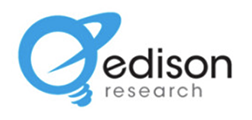 largest share of listening, accounting for more than one-third of daily time with audio among those age 13+. The vast majority of that listening (31%) is to AM/FM over-the-air signals.” (The other 5% comes from radio streams.) Behind AM/FM in listening is streaming music (20%), YouTube (14%), podcasts (11%), SiriusXM (8%), owned music (4%), TV music channels (3%), audiobooks (3%) and other (1%).
largest share of listening, accounting for more than one-third of daily time with audio among those age 13+. The vast majority of that listening (31%) is to AM/FM over-the-air signals.” (The other 5% comes from radio streams.) Behind AM/FM in listening is streaming music (20%), YouTube (14%), podcasts (11%), SiriusXM (8%), owned music (4%), TV music channels (3%), audiobooks (3%) and other (1%). 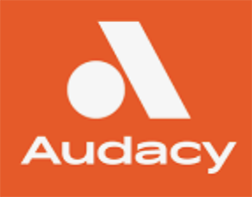 total Audio campaigns — including radio, streaming and podcast advertising— with Veritonic allows us to show the power of Audacy’s content in connecting with audiences and mobilizing customers. We’re thrilled to continue our partnership and enable our clients and advertising partners to leverage audio to achieve the utmost in competitive edge, reach, and ROI.”
total Audio campaigns — including radio, streaming and podcast advertising— with Veritonic allows us to show the power of Audacy’s content in connecting with audiences and mobilizing customers. We’re thrilled to continue our partnership and enable our clients and advertising partners to leverage audio to achieve the utmost in competitive edge, reach, and ROI.”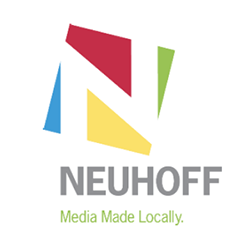 announced. Neuhoff states in announcing the sale that this “transaction is part of an overall strategic decision on behalf of the Neuhoff family to depart the broadcast industry after nearly 70 years,” according to Julian Hickman and Makena Neuhoff, trustees of the Neuhoff family. The company still owns 13 radio brands spread across the Springfield, Illinois; Bloomington, Illinois; and Lafayette, Indiana markets and it “expects to make additional announcements regarding future agreements as the Neuhoff divestiture process moves forward.” Hickman states, “We are proud of what broadcast ownership has meant to our family, our employees, and the markets we serve. Our grandfather, Roger Neuhoff, began his ownership in the business during the mid-1950s. He loved the broadcast industry and was proud of the way our radio and television stations served their local communities.” Neuhoff Media president Mike Hulvey adds, “We are pleased to see the iconic local media brands of Neuhoff Media’s Danville and Decatur markets all brought together through this historic transaction with the Champaign Multimedia Group. The next chapter for the Danville and Decatur radio stations and digital platforms will create something very special for each community.” Kalil & Co., Inc. acted as the exclusive broker for this transaction.
announced. Neuhoff states in announcing the sale that this “transaction is part of an overall strategic decision on behalf of the Neuhoff family to depart the broadcast industry after nearly 70 years,” according to Julian Hickman and Makena Neuhoff, trustees of the Neuhoff family. The company still owns 13 radio brands spread across the Springfield, Illinois; Bloomington, Illinois; and Lafayette, Indiana markets and it “expects to make additional announcements regarding future agreements as the Neuhoff divestiture process moves forward.” Hickman states, “We are proud of what broadcast ownership has meant to our family, our employees, and the markets we serve. Our grandfather, Roger Neuhoff, began his ownership in the business during the mid-1950s. He loved the broadcast industry and was proud of the way our radio and television stations served their local communities.” Neuhoff Media president Mike Hulvey adds, “We are pleased to see the iconic local media brands of Neuhoff Media’s Danville and Decatur markets all brought together through this historic transaction with the Champaign Multimedia Group. The next chapter for the Danville and Decatur radio stations and digital platforms will create something very special for each community.” Kalil & Co., Inc. acted as the exclusive broker for this transaction.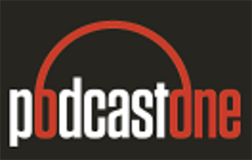 available, ‘The Adam Carolla Podcast’ has remained one of the most popular podcasts on the planet for well over a decade. Fans grew to love the pairing of Adam Carolla & Dr. Drew Pinsky that originated on the world famous KROQ radio and became a cultural touchstone and in 2012 they reunited the partnership for ‘The Adam and Dr. Drew Show.’ In each episode Adam and Dr. Drew take uncensored, nothing-off-limits, calls about sex, drugs, medical and relationship issues. Dr. Drew brings the medicine while Adam’s comedic rants are the spoonful of sugar to make it go down.” PodcastOne president and co-founder Kit Gray adds, “Adam Carolla’s contributions to the medium of digital audio entertainment are immeasurable. From his devoted audience of listeners and advertisers, Adam has inspired legions of loyal fans who tune in daily to hear his comedic take on a wide array of topics. His camaraderie with Dr. Drew is the stuff of legends. This is a podcasting duo that will go down in history as one of the greatest partnerships. As we have grown as a network, so have Adam and Drew and we are thrilled to keep the momentum growing.”
available, ‘The Adam Carolla Podcast’ has remained one of the most popular podcasts on the planet for well over a decade. Fans grew to love the pairing of Adam Carolla & Dr. Drew Pinsky that originated on the world famous KROQ radio and became a cultural touchstone and in 2012 they reunited the partnership for ‘The Adam and Dr. Drew Show.’ In each episode Adam and Dr. Drew take uncensored, nothing-off-limits, calls about sex, drugs, medical and relationship issues. Dr. Drew brings the medicine while Adam’s comedic rants are the spoonful of sugar to make it go down.” PodcastOne president and co-founder Kit Gray adds, “Adam Carolla’s contributions to the medium of digital audio entertainment are immeasurable. From his devoted audience of listeners and advertisers, Adam has inspired legions of loyal fans who tune in daily to hear his comedic take on a wide array of topics. His camaraderie with Dr. Drew is the stuff of legends. This is a podcasting duo that will go down in history as one of the greatest partnerships. As we have grown as a network, so have Adam and Drew and we are thrilled to keep the momentum growing.”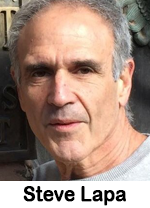 Let’s take a minute to welcome back an old reliable that has been part of our sales and marketing world since Adam pitched Eve and got the first “yes” on the original cold call. No telling how cold that call really was.
Let’s take a minute to welcome back an old reliable that has been part of our sales and marketing world since Adam pitched Eve and got the first “yes” on the original cold call. No telling how cold that call really was. Take a day off. You get one free this year.
Take a day off. You get one free this year.